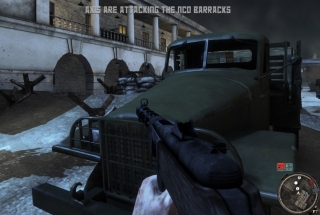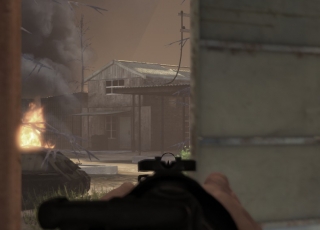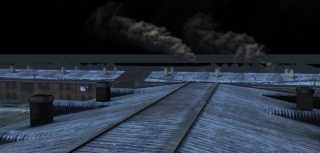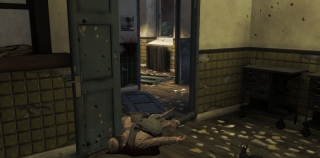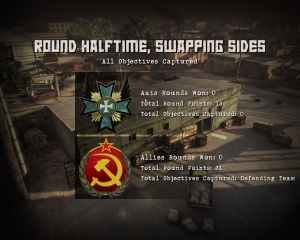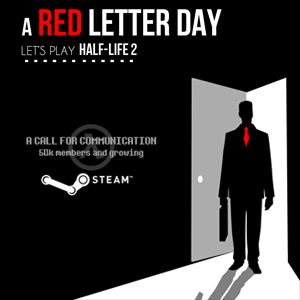Almost a decade ago, a small group of independent gamers got together to make a very unique WWII realism mod using a flavor of the Unreal Engine. The mod became a huge success when it won the Make Something Unreal modding competition; but it would ultimately be a publishing deal with Steam that would propel Tripwire’s future to the next level. Steam Addicts’ own Walter McDaniel got the chance to talk with Alan Wilson, VP of Tripwire, about Red Orchestra and his company.
You guys won the Make Something Unreal competition in 2005. Could you tell us a little about how Tripwire got started on its path to notoriety?
It’s a long story – so a quick version: mod team started coming together in 2002, with core members joining from other mods (Third Reich, Russian Front etc) into 2003. MSU contest appeared in 2003, so we decided to go for it, entering at Phase II – and winning everything from there to the end.
Turned out we had beaten quite a few pro studios going after a free Unreal license! The 4 leads then founded Tripwire Interactive in Feb 2005, a couple of months after the contest ended, with a bit over $30,000 (NOT $1m).
Various publishing deals then get thrown at us – all pretty crap, so there is nothing we are actually prepared to take. John (Gibson) picked up the phone and called Valve, asked if they were interested in doing 3rd party games – we had the contract signed about 2 weeks later.
Rounded up the development funds ourselves and released Red Orchestra: Ostfront 41-45 in March 2006, followed by a bunch of free DLC and updates for the next 5 years. Retail releases across the world.
Started on RO2 in 2007, with a break to produce Killing Floor in 2008/9. KF was a great idea on every level – including the fact that it gave people a break from “serious WWII”. More free content for RO, plus for KF now, including the Christmas and Summer updates we’ve done.
With KF, we went into publishing for ourselves (something to do with our early experiences…). We published KF for ourselves, Zeno Clash in the US, then The Ball and Dwarfs!? globally.
And now RO2…
Red Orchestra takes a very realistic approach to WW2, why did you decide to go with this?
Because we enjoy it? Because there are more than enough “me too” shooter games, with similar mechanics, similar settings and so on. It is that old one we’ve said before: we want to pretend we are IN the battle when we are playing, not pretend we are in some Hollywood movie of the battle.
You’ve moved on to being a publisher, will you be focusing more on publishing or developing in the future?
Core business for us is definitely the inception, creation and execution of new IP. But the more we see of publishing, the more intent we are on keeping control of that for ourselves.
It dictates how the game is seen by large chunks of the fans, so it is important to us. But, seeing we will continue to publish for ourselves, we’ll also use that opportunity to help get other great games to the market, without them getting bent over by the “evil publishers”. The trick will be to NOT become an “evil publisher” ourselves!
We notice that you specialize in FPS games and only publish other genres. Will this be your main focus indefinitely or will you be branching off?
For now, we’ll stick with FPS. But each of us has a pet project or two that we’d love to take the time out to do!
Vehicle combat was a vital aspect of Red Orchestra 1, how far has it advanced with 2?
A long way. RO2 vehicles are much more fully -realized. This includes the obvious modeling side – full 3D interiors, with a full crew – as well as areas such as the damage model, movement and sound. It has taken a lot of work to get it there, but I was really happy to see a post on the forums from a guy who served in M60s, telling us how “right” we had got everything. And, yes, there will be more vehicles coming as (free) updates.
What are the new features your team is most excited about in Red Orchestra 2 compared to 1?
All of them 🙂 I think it is the combination of features that matters – add in the cover system, bullet penetration and suppression and it all combines to make the infantry combat even more special than it was before – immersive and intense.
For those who don’t know, RO2 is being scored by Sam Hulick of Mass Effect 1 and 2 fame. Can you tell us a little about the score and how it influences the gameplay?
Sam will explain all the thought processes and influences, if you ask him! We started with a description of the battle and the state of mind of the soldiers. He went looking for period “influences”, combining that with the fact that we wanted a score that will change with the morale of your team – between various states of morale. So the score will give you an underlying indication of how you are doing at any given moment, the state of mind of your team.
Your company has confirmed that there will be free DLC after launch. While we can all certainly appreciate it, why do you choose to go with free DLC for many of your games, including Killing Floor?
Why not 🙂 ? And we go with free content for ALL our games, not just some. There is one key point: we won’t split the community by selling maps and weapons that people need to play.
Nothing more irritating than the server changing maps and half the players get bumped off because they haven’t ponied up $5 for some map. We WILL do add-ons for money at some point – but the key here is about value for money. See Rising Storm, below…
Can you give us any details about the Rising Storm DLC for this game?
We wanted to kick-start the mod scene for RO2, given that most big mods can take a couple of years to produce – and we wanted people to see the potential as early as possible. So we have sponsored a mod team to produce Rising Storm – which will be a full-scale add-on for RO2, set in the Pacific, bringing the American and Japanese forces into RO.
All fully-playable, with single and multi player. That includes playing single player as the Japanese – Banzai charges even? Add in flamethrowers, some armor and a katana. Should be special. And, yes, we’ll probably charge for this one, given that it will be the same amount of content as the base game!
You have had quite a few promotional characters and items shared with TF2 and Killing Floor. How much do you think your partnership with Valve has boosted sales?
The partnership with Valve goes beyond “just” messing around with a few promo items. We’ve done a few cross-promotions with them on TF2 and KF – including the whole Potato ARG piece. But really it comes back down to the beginning of our relationship with them – they were experimenting with 3rd-party content on Steam and we were happy to try it.
And we keep experimenting, between us. They like to try new stuff – and so do we. And they do make it really easy – they like hearing about new ideas, makes them want to share ideas with us. And who else would let a whole bunch of indie developers mess with their IP, in the Potato ARG?
And finally we have to ask the 1 million dollar question, what advice can you give to other game developers who want to succeed like you?
Teach yourself. Be disciplined – make sure you actually FINISH what you start. Be prepared for a whole bunch of hard work to get started. And it doesn’t stop being hard work – ask our guys at the moment.
We’ve probably blown every bit of goodwill we have with the guys on the team in the closing weeks on RO2 – it is a warning for small teams: when you set your sights very high, it can get beyond challenging.
To say that everyone on this team pulls their weight is a dramatic understatement – and a salutary warning to anyone wanting to get a business off the ground in this industry!
Walter would like to thank Alan Wilson and Tripwire for this latest interview. We really appreciate him taking the time to answer some of our questions. Don’t miss the release of Red Orchestra 2: Heroes of Stalingrad due on Steam September 13th!
![Red Orchestra interview with Tripwire VP Alan Wilson Almost a decade ago, a small group of independent gamers got together to make a very unique WWII realism mod using a flavor of the Unreal Engine. The mod became […]](https://steamaddicts.com/wp-content/uploads/Red-Orchestra-2-featured-616x308.jpg)
